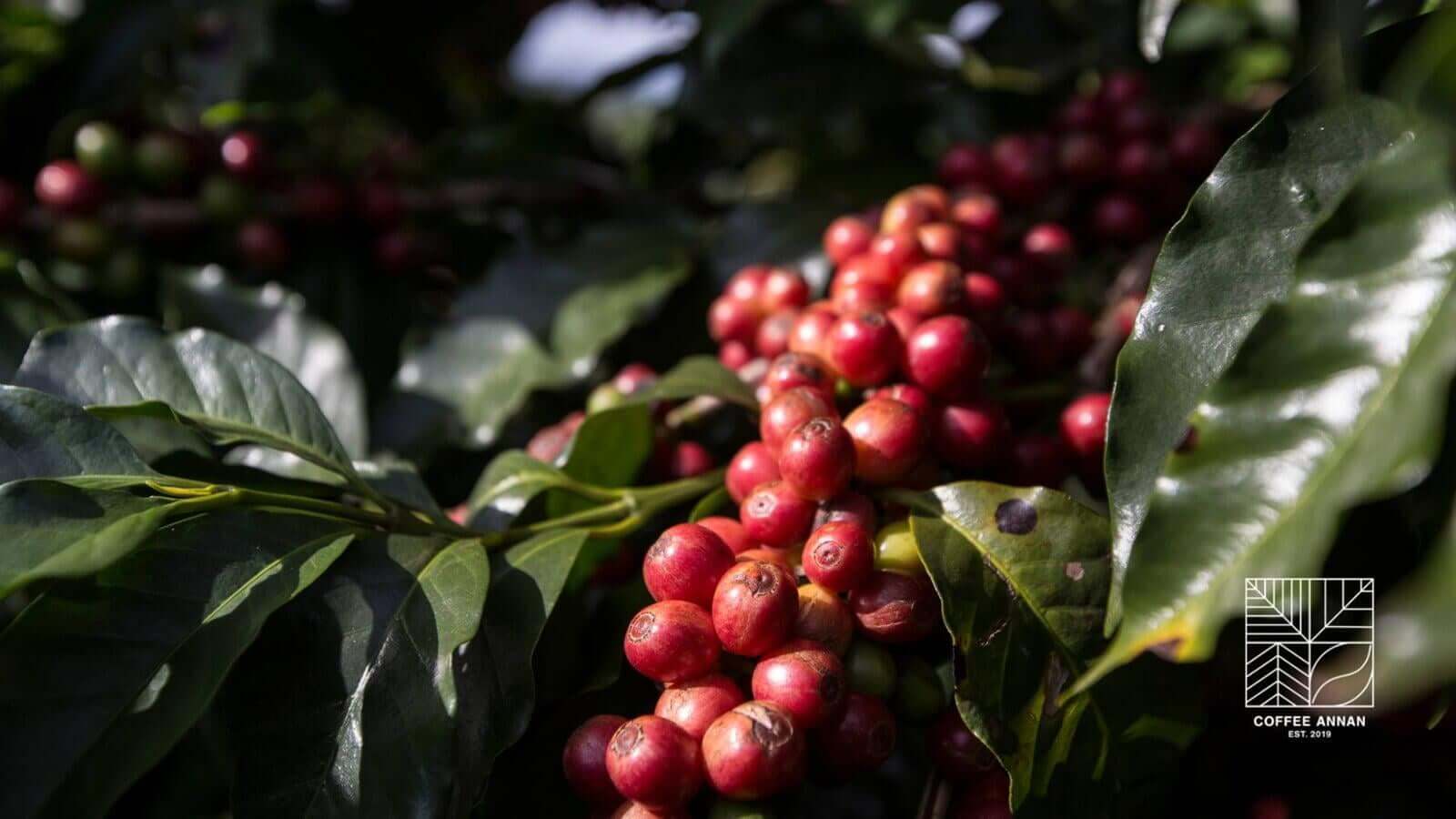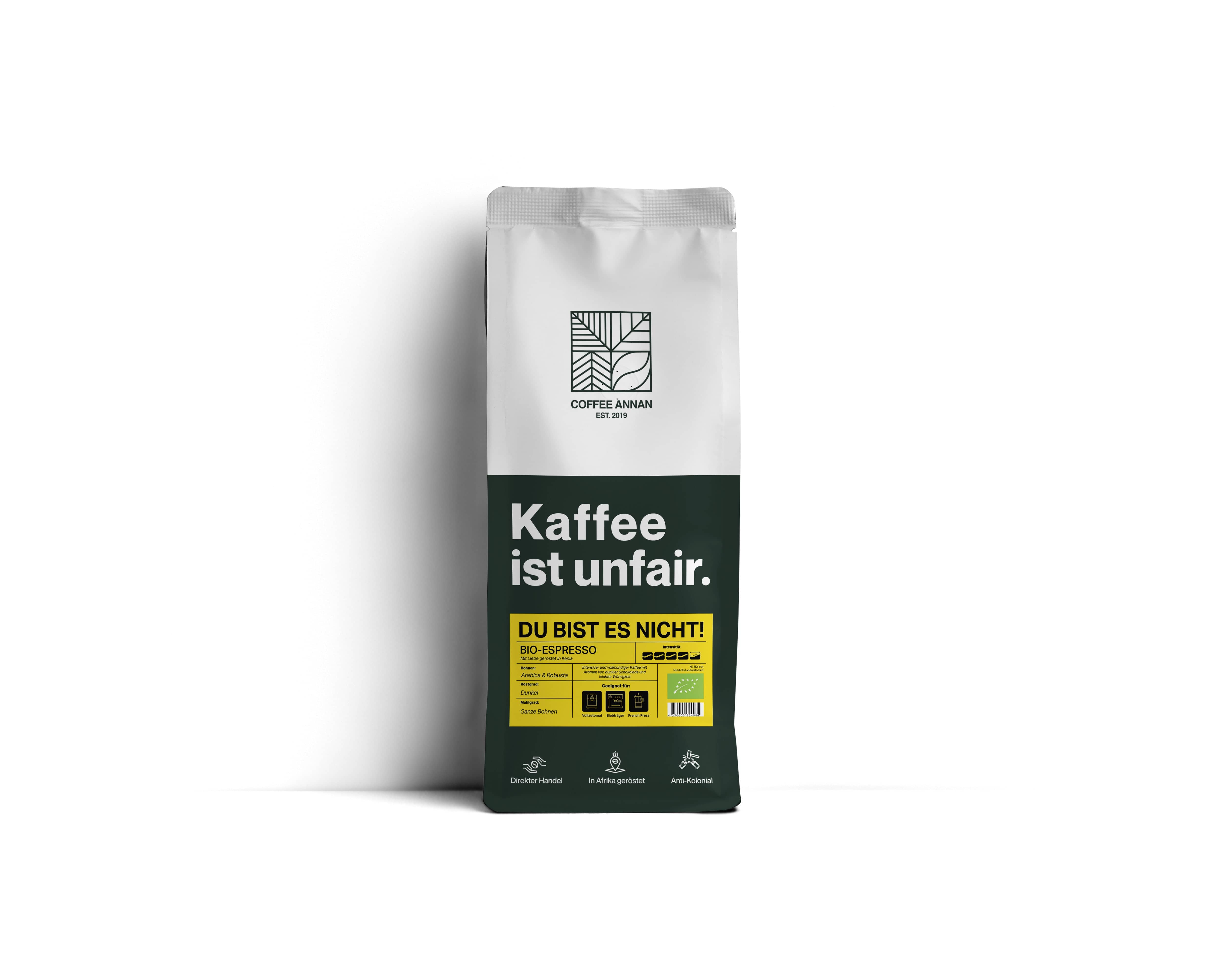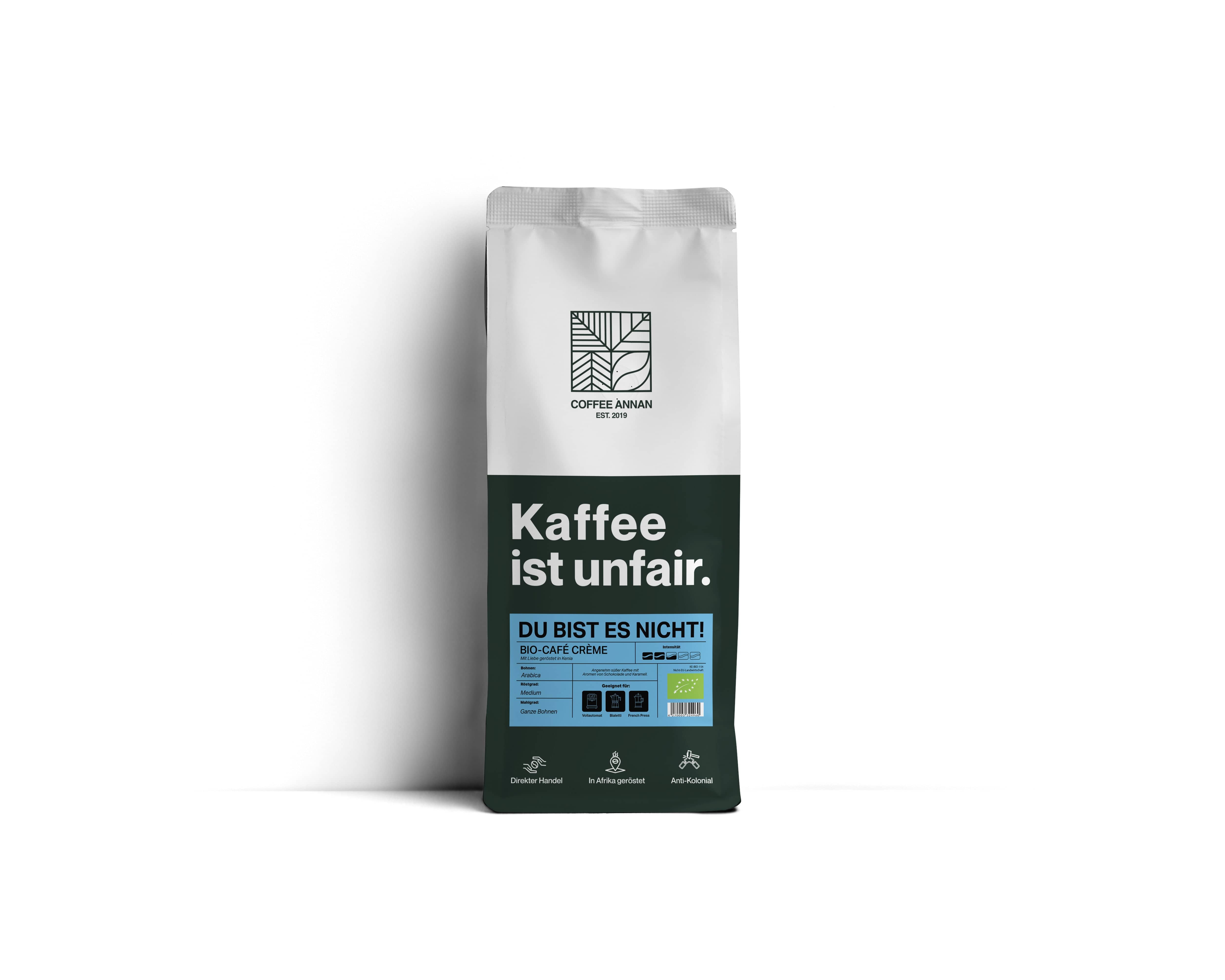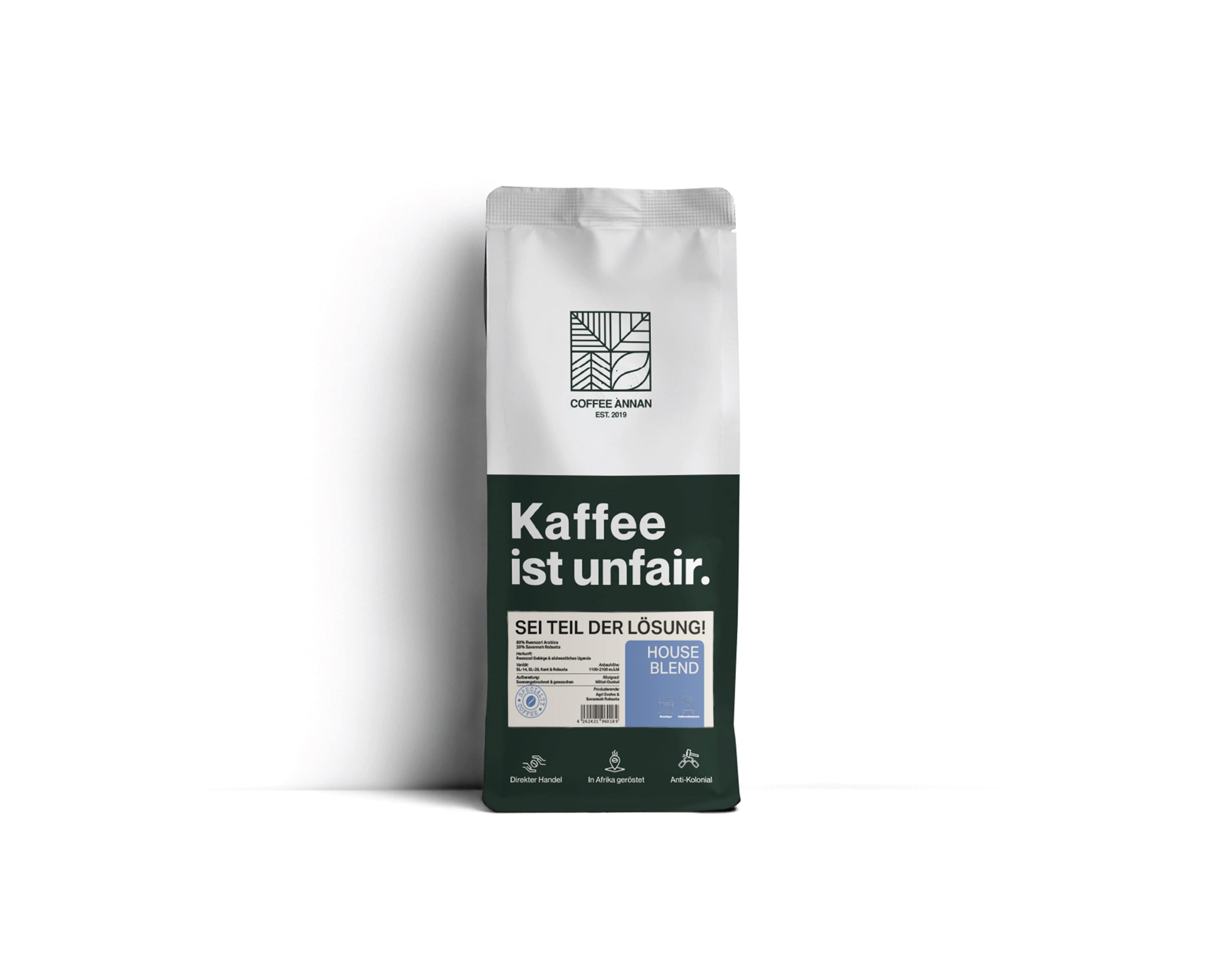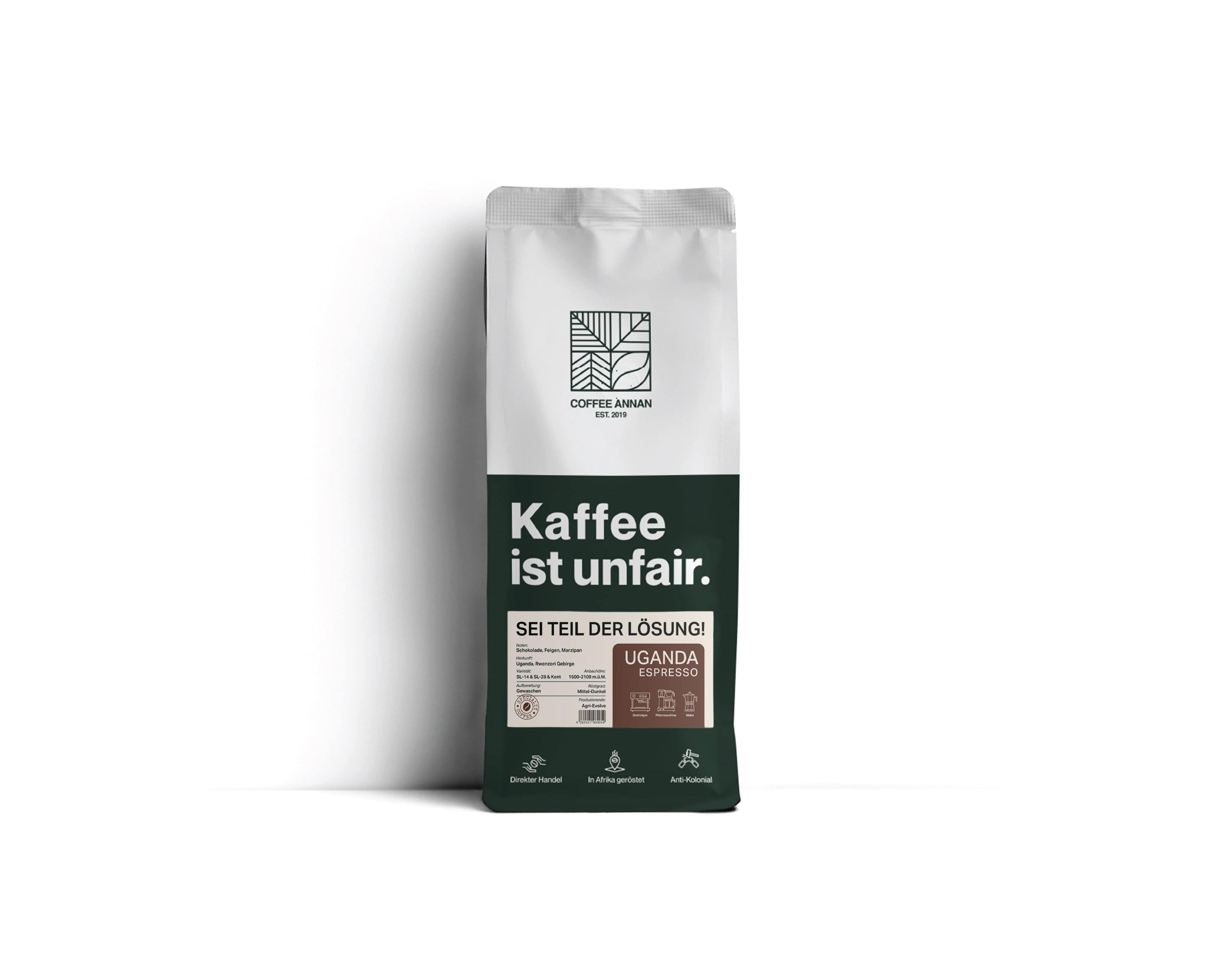I’m trying to learn more about what happens before coffee reaches my cup. The next step of my journey into the world of coffee took me to the most important stage of the coffee process: roasting.
Coffee is always described as a ‘roast’. Dark roast, medium roast, light roast – you get the picture. But what does roasting actually do? And why does Coffee Annan roast coffee in the country of origin? Let’s find out.

Is it hot in here?
I was having a look at the Coffee Annan Instagram page and saw a photo of a handful of coffee beans, just farmed at Kata Muduga in Ethiopia. I’d never actually seen raw coffee beans before and was a bit surprised – they were bright green!
Coffee beans go through a lot before they are roasted: they are planted sustainably, carefully harvested between October and January and then dried out. When coffee beans are first farmed, they are green and taste like grass. Roasting coffee transforms the little green berries into the delicious, dark pearls of goodness we know and love.
The raw beans are put into big rotating drums which are heated to very high temperatures – up to 240 degrees. The beans gradually turn from yellow to tan and produce a sweet, caramel smell. They begin to shake and expand in the heat until they crack, a bit like microwave popcorn. Once they start to crack, the beans start to generate heat themselves, so the heat in the roasting drums is turned down. They are watched closely by expert coffee roasters until it’s time to take them out and let them cool.
Once they have cooled down, any stones and bits of debris are taken out. The roasted beans are checked carefully by hand to make sure they are perfectly prepared. Then they’re ready to be packaged up and shipped. It takes between 10 and 20 days after beans have been roasted for them to develop their full flavour profile.

Light roasted beans are taken out to cool after the first crack and look dry and pale. Medium roasted beans are a darker shade of brown and look a bit smoother. They have a stronger aroma and a richer, sweeter flavour. As you might be able to guess, dark roasted coffee is kept in the roasting drum for longer. Darker roasted beans release some oil and might look a bit shiny.
Fighting imbalance
As I learned when I delved into Fair Trade and direct trade, coffee travels along a complex supply chain before it reaches my cup. So what difference does it make to roast coffee beans in the country in which they are grown?
Roasting coffee is a meticulous process. It’s not surprising that this is where the most value is added to the supply chain. In the coffee industry, raw coffee beans are generally exported immediately after harvesting. They are roasted, packaged and sold in consuming countries, which adds massive value to the coffee. When this happens, the producers earn just a tiny fraction of what the coffee will eventually sell for. Although they produce the most popular agricultural product in the world, 90% of developing countries depend on financial aid.
Roasting coffee in the country of origin increases the value that remains in the producing country by more than 300%. This means that coffee producers earn much more when you buy coffee. Coffee Annan works with a collective of coffee roasters from Ethiopia and Rwanda. Roasting at origin strengthens the economy of the producing country. The whole process of making coffee is done in one place – farming, roasting, and packaging. Coffee beans are roasted, packed up and sent off within 24 hours to the central warehouse in Austria.
It all comes back to the values at the heart of Coffee Annan: building close, personal relationships with coffee-producing communities. There are no language barriers: the roasters communicate with farmers in their language. They work together to produce outstanding, authentic coffee that helps local communities thrive.
Journey to the origin
Last year, the Coffee Annan team travelled through Ethiopia with Solomon, an expert roaster from the Jimma region. This was the first time Marcel and Solomon had met after months of long-distance communication. The team continued their journey to find the best speciality beans and the most talented coffee roasters in a two-week trip across Africa. They visited a small roastery in the highlands of Uganda and tried freshly roasted coffee in Kigali, Rwanda. The whole trip was documented by photographer David Hubacher. You can see his amazing shots all over the Coffee Annan Instagram page.
Carbon neutral
If you’re as concerned about the environment as I am, you’ll want to know that the products you are buying are sustainable. The coffee industry produces a lot of carbon dioxide from roasting, shipping, and selling coffee all over the world. Roasting coffee at origin doesn’t just empower developing communities on a small scale. It is also part of a wider sustainability strategy. I was really excited to learn from the team that Coffee Annan is completely carbon neutral.
Coffee Annan offsets the CO2 generated in roasting, shipping, and trips to roasting plants with an efficient and direct supply chain. Roasting coffee in the country of origin contributes to the Coffee Annan carbon neutral promise: there are significantly fewer intermediate steps between growing and drinking our coffee. Customer visits are kept to a minimum and the team travels by train wherever possible. Coffee Annan also makes sure to use organic products and environmentally friendly printing inks in coffee packaging.
What’s your flavour?
Who knew you could get so much from a little green bean? Roasting is not just another stage in the process of making coffee. It is the moment at which a world of new flavour possibilities is created. Roasting is a fine art which brings out the richness, sweetness, and aroma of coffee beans.
Coffee Annan works with the most talented roasters to extract the best coffee flavours. Limu coffee is a medium roast that tastes like peach, bergamot, and jasmine tea. This herbal infusion has a long-lasting aftertaste – it’s the perfect pick-me-up. Jimma coffee is a darker, richer roast with notes of orange, wine and rich chocolate. It works well as an espresso.
I can’t decide which of the flavours I prefer – but I know that buying coffee roasted at origin is a step towards empowering developing communities and making the coffee world a better place.
We want to set an example in the coffee industry.
Roasting coffee at its origin today will transform the lives of developing communities for tomorrow.








